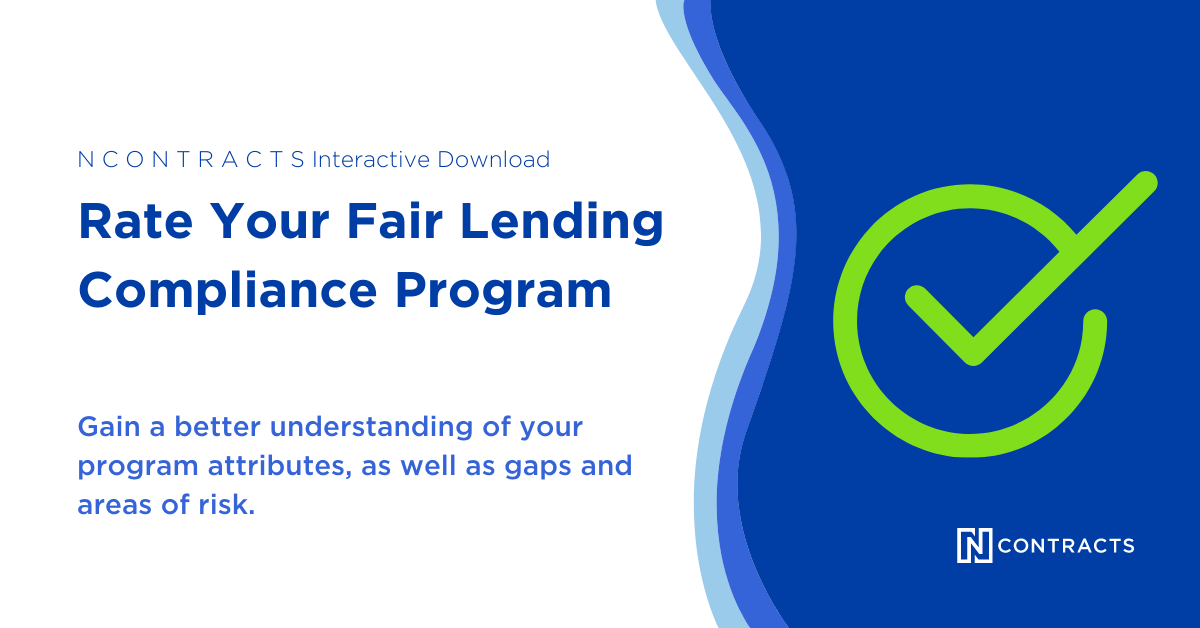We have known for a while now that fair lending is a regulatory hot topic and that banks, mortgage companies, and fintech companies should be on guard. Credit unions should also be on alert, according to the National Credit Union Administration (NCUA).
Read on to find out exactly what the NCUA says it’s watching for.
Fair lending is a credit union challenge too
Some credit unions assume that fair lending enforcement is not a concern of credit unions, but the NCUA is seeing some troubling trends, as NCUA Chairman Todd Harper has made clear. The NCUA identified consumer compliance violations at nearly 15 percent of federal credit unions examined in 2021. Fair lending exams at 29 credit unions revealed 64,000 members were impacted by these violations, which resulted in $185,000 in restitution and remediation. The NCUA identified “compliance management system weaknesses” in most instances.
According to the Consumer Financial Protection Bureau’s annual fair lending report, in 2021 the NCUA cited violations of Reg B for both discrimination and adverse action and referred two Equal Credit Opportunity Act (ECOA) matters to the Department of Justice.
This data shows that Harper was serious when he observed in a 2021 industry speech that “some credit unions may not be paying attention to consumer financial protection as closely as warranted.” He also signaled that “the NCUA must create a dedicated program to supervise for compliance with consumer financial protection and fair lending laws.”
Harper’s remarks align with what we heard at a credit union industry event in late 2020.
Where are credit unions making fair lending mistakes?
Where are credit unions making mistakes? The most common issues include:
- Missing filing deadlines of the loan application register (LARs) as required by the Home Mortgage Disclosure Act.
- Not properly aggregating or capturing data across credit union loan origination systems.
- Not providing specific enough adverse action notices related to Regulation B.
- Misinterpreting Servicemembers Civil Relief Act rules on rate reductions and Military Lending Act definitions of a “covered borrower.”
- Fair Credit Reporting Act complaints.
- Ensuring debt collection and credit scoring is included in fair lending efforts.
Don’t Forget Vendor Management
The industry event also highlighted the importance of third-party vendor management when it comes to fair lending and other compliance issues. When a vendor engages in an activity on behalf of a credit union, that credit union will be held responsible for the vendor’s actions on behalf of the credit union. From a regulatory responsibility perspective, there is no difference between actions taken by a credit union and those of its vendors. Blaming the vendor is not an acceptable defense.
Mortgages & Credit Unions
When it comes to mortgages, avoiding misrepresentations is of the utmost importance. The industry event session made special mention of avoiding misrepresentations of:
- Credit terms and annual percentage rate
- Advertised rates and payments as fixed
- Cash or credit available
- Fees and costs
- Number of payments over the loan’s life
On the mortgage servicing side, he emphasized disclosures for loss mitigation, bankruptcy, and delinquent borrowers as well as private mortgage insurance and escrow.
How to guard against fair lending disparities
Fair lending disparities are surprisingly common. It can even happen when a credit union is trying to be altruistic.
Consider fee waivers. Many members are experiencing financial distress right now, leading your credit union to waive some fees. It is a helpful thing to do, but it can also create an impact and potential issues if fee waivers aren’t offered consistently. Without clear policies, staff will rely on their own judgments, which can lead to disparate treatment if similarly situated consumers are not offered the same accommodation. The same can be said if an employee disregards a policy in order to help a member.
The only way to know for sure that your credit union is complying with fair lending is to take a hard look at data, and we are not just talking loan data. Credit unions should all be analyzing their data to uncover fair lending disparities. Focus not only on loan data but look to complaints and fee waivers as well.
Choosing not to analyze data increases fair lending risk, leaving open the possibility that examiners will find a problem you did not.
Do you know if your institution is complying with fair lending laws? Want to learn more about how Fair Lending Analytics can help?
Find out when you read our article Is Your FI Complying with Fair Lending Laws? – Leverage Analytics
